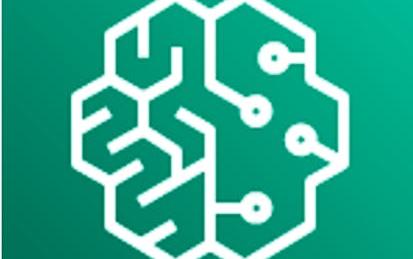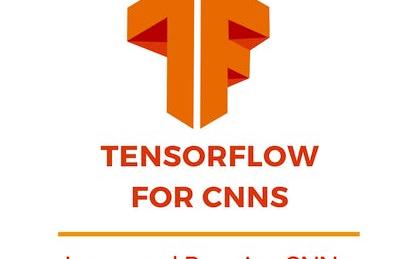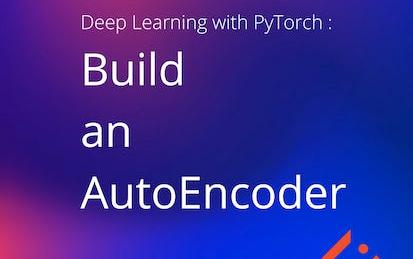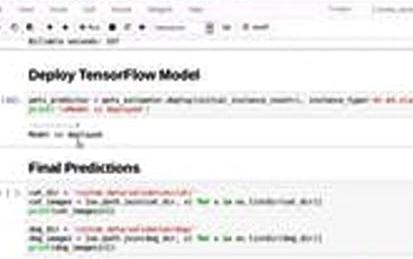

دوراتنا

Classify Images of Cats and Dogs using Transfer Learning
This is a self-paced lab that takes place in the Google Cloud console. TensorFlow is an end-to-end open source platform for machine learning. It has a comprehensive, flexible ecosystem of tools, libraries and community resources that lets researchers push the state-of-the-art in ML and developers easily build and deploy ML powered applications. This lab uses transfer learning to train your machine. In transfer learning, when you build a new model to classify your original dataset, you reuse the feature extraction part and re-train the classification part with your dataset.
-
Course by

-
 Self Paced
Self Paced
-
 1 ساعات
1 ساعات
-
 الإنجليزية
الإنجليزية

PyTorch Basics for Machine Learning
This course is the first part in a two part course and will teach you the fundamentals of PyTorch. In this course you will implement classic machine learning algorithms, focusing on how PyTorch creates and optimizes models. You will quickly iterate through different aspects of PyTorch giving you strong foundations and all the prerequisites you need before you build deep learning models.
-
Course by

-
 الإنجليزية
الإنجليزية

PyTorch and Deep Learning for Decision Makers
Learn how PyTorch, a deep learning framework, can be used to automate and optimize processes through the development and deployment of state-of-the-art AI applications. The course will also help you understand the importance of data quality, how to choose the right model, and the challenges in deploying and maintaining both deep learning and machine learning applications.
-
Course by

-
 Self Paced
Self Paced
-
 15
15
-
 الإنجليزية
الإنجليزية

Applied Deep Learning Capstone Project
In this capstone project, you'll use either Keras or PyTorch to develop, train, and test a Deep Learning model. Load and preprocess data for a real problem, build the model and then validate it.
-
Course by

-
 64
64
-
 الإنجليزية
الإنجليزية

Deep Learning with Tensorflow
Much of theworld's data is unstructured. Think images, sound, and textual data. Learn how to apply Deep Learning with TensorFlow to this type of data to solve real-world problems.
-
Course by

-
 الإنجليزية
الإنجليزية

Deep Learning with Python and PyTorch
This course is the second part of a two-part course on how to develop Deep Learning models using Pytorch.
-
Course by

-
 Self Paced
Self Paced
-
 72
72
-
 الإنجليزية
الإنجليزية

Deep Learning Fundamentals with Keras
New to deep learning? Start with this course, that will not only introduce you to the field of deep learning but give you the opportunity to build your first deep learning model using thepopular Keras library.
-
Course by

-
 Self Paced
Self Paced
-
 30
30
-
 الإنجليزية
الإنجليزية

Getting Started with Tensorflow.js
By the end of this project, you will learn how to code a smart webcam to detect people and other everyday objects using a pre-trained COCO-SSD image recognition model with Tensorflow.js.
Based on an older library called deeplearn.js, Tensorflow.js is a deep learning library that leverages Tensorflow to create, train and run inference on artificial neural network models directly in a web browser, utilizing the client's GPU/CPU resources (accelerated using WebGL). Tensorflow.js brings Tensorflow to the web!
JavaScript/Typescript experience is heavily recommended.
-
Course by

-
 Self Paced
Self Paced
-
 2 ساعات
2 ساعات
-
 الإنجليزية
الإنجليزية
Explainable deep learning models for healthcare - CDSS 3
This course will introduce the concepts of interpretability and explainability in machine learning applications. The learner will understand the difference between global, local, model-agnostic and model-specific explanations. State-of-the-art explainability methods such as Permutation Feature Importance (PFI), Local Interpretable Model-agnostic Explanations (LIME) and SHapley Additive exPlanation (SHAP) are explained and applied in time-series classification.
-
Course by

-
 Self Paced
Self Paced
-
 30 ساعات
30 ساعات
-
 الإنجليزية
الإنجليزية

Deep Learning for Real Estate Price Prediction
In this hands-on guided project, we will predict real estate prices with deep learning. In this project, we will predict home sale prices in King County in the U.S. between May, 2014 and May, 2015 using several features such as number of bedrooms, bathrooms, view, and square footage. This guided project is practical and directly applicable to the real estate industry. You can add this project to your portfolio of projects which is essential for your next job interview.
-
Course by

-
 Self Paced
Self Paced
-
 2 ساعات
2 ساعات
-
 الإنجليزية
الإنجليزية

Deploying Machine Learning Models in Production
**Starting May 8, enrollment for the Machine Learning Engineering for Production Specialization will be closed. Please enroll in this specialization or to individual courses by then to gain access to this course material.** In the fourth course of Machine Learning Engineering for Production Specialization, you will learn how to deploy ML models and make them available to end-users. You will build scalable and reliable hardware infrastructure to deliver inference requests both in real-time and batch depending on the use case.
-
Course by

-
 Self Paced
Self Paced
-
 33 ساعات
33 ساعات
-
 الإنجليزية
الإنجليزية

Introduction to Deep Learning
Deep Learning is the go-to technique for many applications, from natural language processing to biomedical. Deep learning can handle many different types of data such as images, texts, voice/sound, graphs and so on. This course will cover the basics of DL including how to build and train multilayer perceptron, convolutional neural networks (CNNs), recurrent neural networks (RNNs), autoencoders (AE) and generative adversarial networks (GANs).
-
Course by

-
 Self Paced
Self Paced
-
 60 ساعات
60 ساعات
-
 الإنجليزية
الإنجليزية

Remote Sensing Image Acquisition, Analysis and Applications
Welcome to Remote Sensing Image Acquisition, Analysis and Applications, in which we explore the nature of imaging the earth's surface from space or from airborne vehicles. This course covers the fundamental nature of remote sensing and the platforms and sensor types used. It also provides an in-depth treatment of the computational algorithms employed in image understanding, ranging from the earliest historically important techniques to more recent approaches based on deep learning.
-
Course by

-
 Self Paced
Self Paced
-
 23 ساعات
23 ساعات
-
 الإنجليزية
الإنجليزية

Detect Fake News in Python with Tensorflow
"Fake News" is a word used to mean different things to different people. At its heart, we define "fake news" as any news stories which are false: the article itself is fabricated without verifiable evidence, citations or quotations. Often these stories may be lies and propaganda that is deliberately intended to confuse the viewer, or may be characterized as "click-bait" written for monetary incentives (the writer profits on the number of people who click on the story).
-
Course by

-
 Self Paced
Self Paced
-
 2 ساعات
2 ساعات
-
 الإنجليزية
الإنجليزية

Machine Learning Data Lifecycle in Production
**Starting May 8, enrollment for the Machine Learning Engineering for Production Specialization will be closed.
-
Course by

-
 Self Paced
Self Paced
-
 22 ساعات
22 ساعات
-
 الإنجليزية
الإنجليزية

Introduction to Computer Vision
Introduction to Computer Vision guides learners through the essential algorithms and methods to help computers 'see' and interpret visual data. You will first learn the core concepts and techniques that have been traditionally used to analyze images. Then, you will learn modern deep learning methods, such as neural networks and specific models designed for image recognition, and how it can be used to perform more complex tasks like object detection and image segmentation.
-
Course by

-
 Self Paced
Self Paced
-
 8 ساعات
8 ساعات
-
 الإنجليزية
الإنجليزية

Data Balancing with Gen AI: Credit Card Fraud Detection
In this 2-hour guided project, you will learn how to leverage Generative AI for data generation to address data imbalance. SecureTrust Financial Services, a financial institution, has asked us to help them improve the accuracy of their fraud detection system. The model is a binary classifier, but it's not performing well due to data imbalance. As data scientists, we will employ Generative Adversarial Networks (GANs), a subset of Generative AI, to create synthetic fraudulent transactions that closely resemble real transactions.
-
Course by

-
 Self Paced
Self Paced
-
 3 ساعات
3 ساعات
-
 الإنجليزية
الإنجليزية

AI for Everyone: Master the Basics
Learn what Artificial Intelligence (AI) is by understanding its applications and key concepts including machine learning, deep learning and neural networks.
-
Course by

-
 33
33
-
 الإنجليزية
الإنجليزية

Deep Neural Networks with PyTorch
The course will teach you how to develop deep learning models using Pytorch. The course will start with Pytorch's tensors and Automatic differentiation package. Then each section will cover different models starting off with fundamentals such as Linear Regression, and logistic/softmax regression. Followed by Feedforward deep neural networks, the role of different activation functions, normalization and dropout layers. Then Convolutional Neural Networks and Transfer learning will be covered. Finally, several other Deep learning methods will be covered.
-
Course by

-
 Self Paced
Self Paced
-
 31 ساعات
31 ساعات
-
 الإنجليزية
الإنجليزية

Building Recommendation System Using MXNET on AWS Sagemaker
Please note: You will need an AWS account to complete this course. Your AWS account will be charged as per your usage. Please make sure that you are able to access Sagemaker within your AWS account. If your AWS account is new, you may need to ask AWS support for access to certain resources. You should be familiar with python programming, and AWS before starting this hands on project. We use a Sagemaker P type instance in this project for training the model, and if you don't have access to this instance type, please contact AWS support and request access.
-
Course by

-
 Self Paced
Self Paced
-
 3 ساعات
3 ساعات
-
 الإنجليزية
الإنجليزية

TensorFlow for CNNs: Learn and Practice CNNs
This guided project course is part of the "Tensorflow for Convolutional Neural Networks" series, and this series presents material that builds on the second course of DeepLearning.AI TensorFlow Developer Professional Certificate, which will help learners reinforce their skills and build more projects with Tensorflow.
-
Course by

-
 Self Paced
Self Paced
-
 3 ساعات
3 ساعات
-
 الإنجليزية
الإنجليزية

Deep Learning with PyTorch : Build an AutoEncoder
In these one hour project-based course, you will learn to implement autoencoder using PyTorch. An autoencoder is a type of neural network that learns to copy its input to its output. In autoencoder, encoder encodes the image into compressed representation, and the decoder decodes the representation to reconstruct the image. We will use autoencoder for denoising hand written digits using a deep learning framework like pytorch.
-
Course by

-
 Self Paced
Self Paced
-
 3 ساعات
3 ساعات
-
 الإنجليزية
الإنجليزية

Using TensorFlow with Amazon Sagemaker
Please note: You will need an AWS account to complete this course. Your AWS account will be charged as per your usage. Please make sure that you are able to access Sagemaker within your AWS account. If your AWS account is new, you may need to ask AWS support for access to certain resources. You should be familiar with python programming, and AWS before starting this hands on project. We use a Sagemaker P type instance in this project, and if you don't have access to this instance type, please contact AWS support and request access.
-
Course by

-
 Self Paced
Self Paced
-
 3 ساعات
3 ساعات
-
 الإنجليزية
الإنجليزية

Deep Learning Applications for Computer Vision
In this course, you’ll be learning about Computer Vision as a field of study and research. First we’ll be exploring several Computer Vision tasks and suggested approaches, from the classic Computer Vision perspective. Then we’ll introduce Deep Learning methods and apply them to some of the same problems. We will analyze the results and discuss advantages and drawbacks of both types of methods. We'll use tutorials to let you explore hands-on some of the modern machine learning tools and software libraries.
-
Course by

-
 Self Paced
Self Paced
-
 23 ساعات
23 ساعات
-
 الإنجليزية
الإنجليزية

Introduction to Machine Learning with Python
This course will give you an introduction to machine learning with the Python programming language. You will learn about supervised learning, unsupervised learning, deep learning, image processing, and generative adversarial networks. You will implement machine learning models using Python and will learn about the many applications of machine learning used in industry today. You will also learn about and use different machine learning algorithms to create your models. You do not need a programming or computer science background to learn the material in this course.
-
Course by

-
 Self Paced
Self Paced
-
 13 ساعات
13 ساعات
-
 الإنجليزية
الإنجليزية



